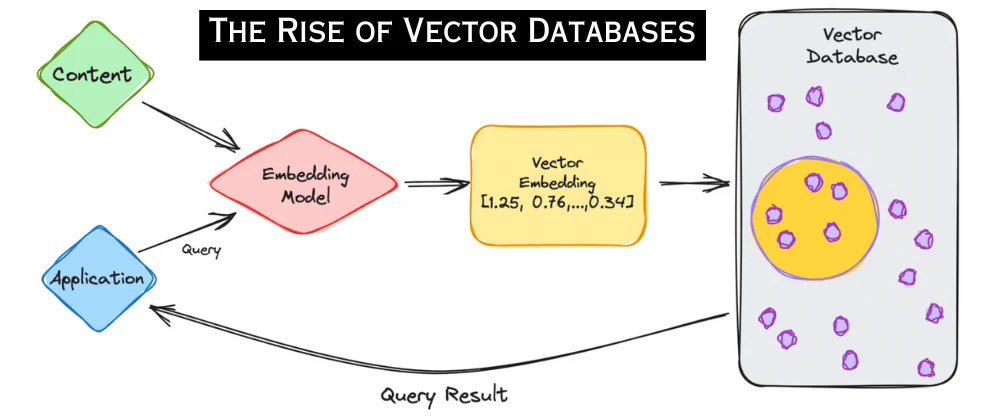In the digital age, where data is generated at an unprecedented scale and speed, traditional databases are being pushed to their limits. Enter vector databases, a groundbreaking technology that is revolutionizing the way we store, retrieve, and analyze complex data. This blog post explores the emergence of vector databases, their unique features, applications, and the impact they are poised to have on industries and data science.
What are Vector Databases?
Vector databases are designed to store, index, and manage vector embeddings – high-dimensional vectors that represent complex data like images, text, and audio. Unlike traditional databases that deal with discrete, scalar values (numbers or text), vector databases handle continuous, multi-dimensional data, enabling more efficient and accurate retrieval of information.
Key Features of Vector Databases
- Efficient Similarity Search: They excel in performing similarity searches, finding the closest matches to a query vector in high-dimensional space, which is crucial for applications like recommendation systems and image recognition.
- Scalability: Vector databases are built to handle large volumes of data, scaling horizontally to accommodate the growing data needs of modern applications.
- Speed and Accuracy: With advanced indexing and retrieval mechanisms, these databases offer rapid and precise results, even in complex query scenarios.
Applications of Vector Databases
The flexibility and efficiency of vector databases make them ideal for various applications, particularly in fields requiring quick retrieval of similar items:
- Content-Based Recommendations: In media streaming and e-commerce, vector databases power recommendation engines by quickly finding items similar to user preferences.
- Image and Video Search: They enable advanced image and video search functionalities, allowing users to find content through visual queries.
- Natural Language Processing (NLP): Vector databases are instrumental in NLP applications, supporting features like semantic search, text classification, and sentiment analysis.
The Impact on Industries
The rise of vector databases is significantly impacting multiple industries, offering innovative solutions to longstanding challenges:
- Technology and Media: Enhancing user experience through personalized content and efficient search capabilities.
- Healthcare: Facilitating medical research by enabling fast retrieval of similar case studies, images, or patient records.
- Finance: Improving fraud detection and customer service by quickly analyzing and matching transaction patterns.
Challenges and Future Directions
Despite their advantages, vector databases face challenges, particularly in areas like standardization, interoperability, and managing the computational complexity of high-dimensional data. The future will likely see advancements in:
- Integration with Traditional Databases: Bridging the gap between vector and traditional databases to leverage the strengths of both technologies.
- Improved Algorithms for Vectorization: Enhancing the process of converting data into vector form for more accurate and meaningful representations.
- AI and Machine Learning Integration: Tighter integration with AI and ML models to enhance the capabilities of vector databases in predictive analytics and decision-making.
Conclusion
The rise of vector databases marks a significant evolution in the data management landscape, offering powerful tools for handling the complexity and volume of modern data. As these databases continue to mature, they will undoubtedly play a crucial role in driving the next wave of technological and analytical advancements.

